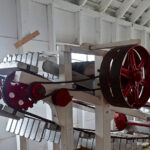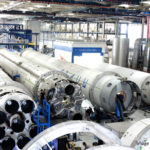
The actual meaning of collaborative robot is the act of working with somebody to create something during manufacturing. The purpose of the robot is to work around the humans. But apart from that there are various types of collaborative robots that are used by the industries. Some robots have different additional safety features and some have different features. According the types there are various types some have hand guiding cobots, some have guiding with separation monitoring, some have power lifting cobots. These robots are capable to work safely alongside humans without any obstruction. A lot of programming skill is required for their set up. Special cages are made for them and are surrounded by guards for safety purpose.
Cobots currently function colleagues to several staff. Humans are ready to get out of “3D jobs” – jobs that are dangerous, dirty, or dull. Folks will currently specialize in a lot of financially and mentally-rewarding tasks.
No previous programming expertise required! Cooperative robots are capable of cranking up production levels; however they are ready to add worth to existing jobs. This lets humans yet again realize passion andamass information concerning what they turn out.
Programming cobots has been created easier than ever with the utilization of teach pendants. Cobots square measure intuitive to show and simple to control. Businesses don’t have to be compelled to pay time and resources on writing sophisticated programming scripts. Mobile bases allow versatile relocation and automated motion.
Vision systems will be additional so cobots will examine encompassing areas with mounted cameras, creating environments safer for human staff. Torque sensors additional to the cobot’s joints give glorious collision sensitivity. The technology of those sensors permits cobots to be employed in application that need advanced force and compliance management algorithms.
Collaborative robots play a serious role within the Fourth technological revolution. With the help of cobots humans will win higher levels of potency and fast productivity gains. Cobots will deliver all the benefits of advanced robotic automation while not the value-added prices related to programming, setup, and secure work cells. Most of the time, cooperative robots don’t need safety fencing.
The labor shortage could be a real issue for makers. Cooperative robots address several of the industries and applications hit hardest by hiring challenges. Machine tending, packaging, assembly, and process applications square measure a invasive space for cobots.
Cobots have proved to systematically deliver ROI in but a year. Some still believe that they’re unable to handle sturdy, industrial applications. However an application like high-torque screw driving is at intervals the skills of contemporary cobots.
Still others feel that cobots can’t handle process applications like spraying, polishing, dispensing, and sanding. However cobot kits currently include pneumatic which will be controlled by the machine. Force and torsion sensors permit cobots to be utilized in applications that need force management right out of the box. Cobots will currently defy tasks wherever force feedback is integral to getting uniform results and repeatability.
Even though safety may be an extremely advanced subject once it involves cooperative robots, bound makers can qualify their robots’ safety level. In fact, they ordinarily get a 3rd party to issue a certification of safety. Since the agency with the foremost rigorous approval method is that the TUV (German Safety Association), several robots are approved by this third party. However since there are tons of various variables within the “safety” certification of a robot, the sole issue you wish to grasp is this: simply because your robot is certified safe, doesn’t mean your application is. You must always perform an entire risk assessment per the ISO 10218 (or more recently the ISO/TS 15066).




